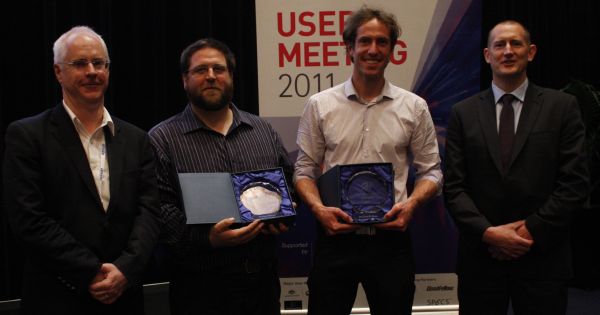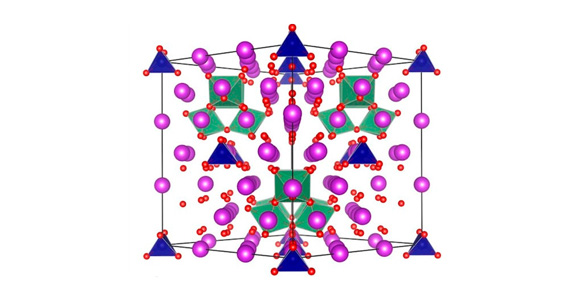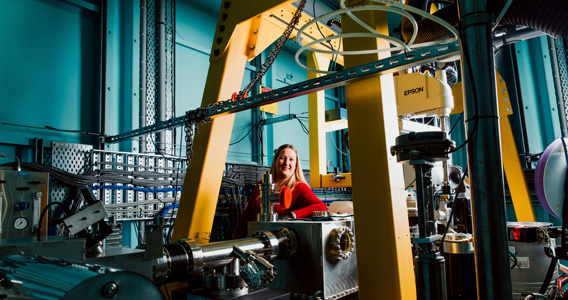Kaye Morgan developed methods for taking synchrotron x-ray images of live biomedical subjects. Her methods are being used to assess promising new treatments for cystic fibrosis.
Corey Putkunz developed new synchrotron x-ray imaging techniques for obtaining 2D and 3D images of biological and materials samples with nano-scale features.
Kaye Morgan
During her PhD at Monash University, Kaye investigated several aspects of imaging using synchrotron x-rays for phase contrast. Her aim was to achieve live imaging to detect the effect of new treatments delivered to airways suffering from cystic fibrosis.
This type of imaging raises several challenges. It simultaneously requires the spatial resolution to reveal micron-sized features in the liquid lining of the airways and the sensitivity to distinguish that liquid from the surrounding tissue – and exposures that are short enough to capture useful images of constantly moving airways.

Photo above: Kaye Morgan, joint winner of the 2011 AS Thesis Medal, at the AS imaging and medical beamline
Kaye started with a theoretical model of propagation-based phase contrast x-ray imaging from a rounded edge, analytically describing the complex wavefield (visualised in the Argand plane) and comparing an exact description of the wavefield to commonly-used numerical models.
She drew on experimental and simulation data to describe how a spinning paper diffuser (regularly used in synchrotron medical imaging beamlines to even out the x-ray illuminating field) changes the observed coherence of a synchrotron x-ray source, and how this affects the visibility of propagation-based phase contrast images.
Kaye then applied the results of her investigations to optimise propagation-based phase contrast imaging for observing airways in live mice as a means of assessing promising new treatments for cystic fibrosis.
As part of an ongoing collaboration with biomedical researchers from the Women’s and Children’s Hospital in Adelaide, this work led to the first high magnification phase-contrast x-ray images of live airway surfaces. Kaye and her colleagues used the improved imaging methods to track the motion of micron-size debris, and employed high resolution computed tomography (CT) to look at the lung morphology of mouse models of cystic fibrosis.
Kaye’s thesis describes the first experimental demonstration of sensitive, quantitative x-ray phase imaging using a single attenuating reference grid to achieve differential phase contrast in both transverse directions from a single sample image taken with a short exposure. This demonstrates the new method’s suitability for live biomedical imaging.
Kaye’s method has been incorporated into the ongoing airway surface study. Her involvement in the study is continuing with a Discovery Early Career Researcher Award from the Australian Research Council. Her thesis (including published papers) is available at: http://alturl.com/cuf34
Kaye’s PhD was co-supervised by Karen Siu (Monash University and AS) and David Paganin (Monash University). Her experimental imaging work was done at the Biomedical Imaging Centre of the SPring-8 synchrotron in Japan. Kaye is looking forward to bringing her techniques to the Australian Synchrotron’s imaging and medical beamline.
Corey Putkunz
As part of his PhD, joint 2011 AS Thesis Medal winner Corey Putkunz developed new synchrotron x-ray imaging techniques for obtaining 2D and 3D images of biological and materials samples with nano-scale features. Unlike conventional microscopy, these diffraction imaging techniques do not require lenses to form images, and are therefore not limited by lens resolution or manufacturing quality.

Photo above (L-R): AS Director Keith Nugent, David Paganin (accepting the AS Thesis Medal 2011 award on behalf of Kaye Morgan), Corey Putkunz and Andrew Peele (AS Head of Science and Corey’s PhD supervisor).
Corey completed his PhD in the Department of Physics at La Trobe University. His research involved advancing methods for x-ray imaging at the nano-scale, specifically coherent diffractive imaging (CDI). He developed a technique for two-dimensional lens-less imaging called phase diverse coherent diffractive imaging. This technique uses a focused synchrotron x-ray source to illuminate samples ranging in size from 1 micrometre (micron) to 50 microns or more. X-ray diffraction data is collected from numerous positions on the sample and combined using specially developed algorithms. The technique is much more sensitive than similar methods.
He used his 2D technique to quantitatively image the granular structure of the precursors of a protein-based adhesive produced by the sandcastle worm, extracting information about the adhesive’s structure, chemical composition and density. The sandcastle worm lives in intertidal surf zones, using its powerful adhesive to build a home out of sand and broken seashells. Other researchers are studying this adhesive for its potential to provide a model for new types of biocompatible glues for medical purposes, such as repairing small bone fractures.
Corey then created a novel method for efficiently performing 3D image reconstructions of an object based on a multitude of 2D image reconstructions from different viewing angles. This method is called bootstrapped Fresnel coherent diffractive imaging (FCDI) tomography. He demonstrated the 3D technique using simulations and data from an insect wing collected using coherent optical laser light.
To provide more robust and timely 3D imaging using FCDI, Corey formulated a method for performing image reconstruction in three dimensions, avoiding the need to reconstruct individual 2D images prior to 3D image formation. He demonstrated his method, and its advantages and limitations, using simulations based on accurate experimental geometries and samples.
As a result of research undertaken during his PhD, Corey can claim several high-profile publications, including papers in Nature Photonics and Physical Review Letters.
Towards the end of his PhD studies, Corey became interested in the possibility of extending the advances made in CDI to electron imaging at the atomic scale. He is currently a post-doctoral fellow at The University of Melbourne developing single shot ultra-fast electron diffractive imaging with the hope of capturing atomic resolution images at time-scales measured in femtoseconds. He collaborates closely with the Monash Centre for Electron Microscopy as a second avenue to implement atom-scale diffraction imaging. This work has already resulted in a publication in Physical Review Letters providing the first demonstration of atomic-scale electron ptychography, a more robust variant of CDI.
Corey is also interested in implementing x-ray CDI methods at the Australian Synchrotron. He has been involved in numerous experiments at the XFM beamline, combining scanning transmission x-ray microscopy (STXM) with diffraction imaging as complementary techniques. This work will further extend the utility of beamlines that are already popular in both biological and materials science research.
Corey’s PhD was supervised by Andrew Peele (AS Head of Science, previously at La Trobe University).











